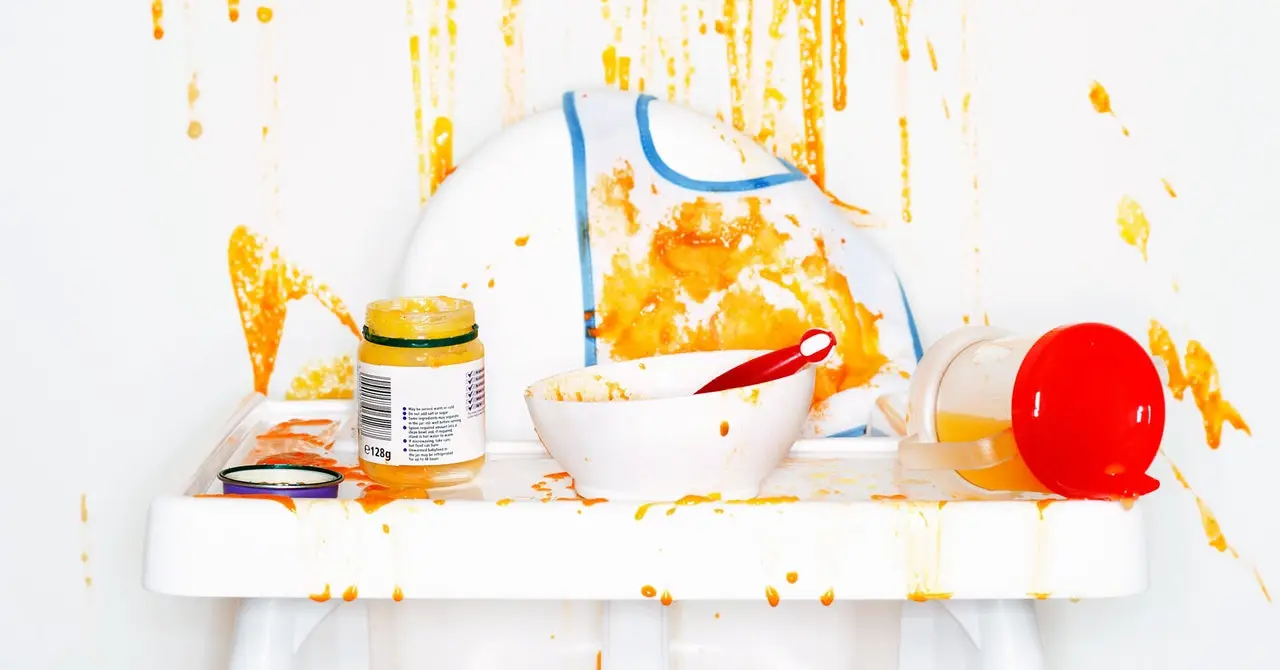Microwaving delivers a triple whammy: heat, UV irradiation, and hydrolysis
Microwave ovens do not generate ultraviolet light. They operate in the, well, microwave region of the electromagnetic spectrum.
I’m not saying microwaving plastic poses no risks, but this mistake makes me doubt the veracity of some of the more sensationalist claims in the article.
Wired articles are generally about interesting topics but take a sensationalist click-bait approach. I usually just skim the headline and look up the info somewhere more reputable if it sounds important.
For example, here’s some info from the USDA:
Plastic storage containers such as margarine tubs, take-out containers, whipped topping bowls, and other one-time use containers should not be used in microwave ovens. These containers can warp or melt, possibly causing harmful chemicals to migrate into the food.
https://www.fsis.usda.gov/node/3355So…
Don’t microwave plastics that were not designed to be microwaved.
Ground breaking.In a past study, I saw that even microwave-safe plastics leak harmful chemicals into the food
Perhaps, but that’s not what this research has concluded.
Makes sense, hydrocarbons and heat generally means cancer. They like to make all kinds of things that your body doesn’t like.
causing harmful chemicals to migrate into the food
damn immigrants taking our food
THEY TOOK JER FOOD!
So it’s only a problem if you melt your bowl. Sounds like a nothing
So in theory so long as you don’t microwave too long you should be fine? I’ve never left a plastic container in long enough for it to warp or melt
Not really, even if it gets hot but doesn’t warp it can still release harmful chemicals. I don’t think it’s as hard of a rule as not microwaving metal but it should definitely be minimized.
It also says they microwaved the baby food in its plastic container for 3 minutes on High before checking to see the amount of microplastics in the results.
Not sure about you guys, but I’ve had some experience with baby food in the last decade and can confirm that is FUCKING INSANE!
Baby food is for… well, babies. And therefore is in baby portions. Like an ounce or two of easily digestible liquids, like liquified peas. Putting a couple ounces of liquid peas in the microwave for 3 minutes on High is not going to end well, no matter what type of container you’re using.
“We need a sensationalist headline to rile people up” “Ok, I’ll get ChatGPT to whip up some bullshit about microwaving plastic and how it fucks up all the food!” “Awesome”
“Hey boss, we got called out by people who have common sense” “Oh well, they’re not our target audience anyway, our targeted demographic will forget all about this when you post the next article, they have the memory of goldfish, fuck em”
deleted by creator
angry Brits have entered the chat
Maybe those angry Brits could invent a kettle that heats water up with 120V faster than a microwave can if they’ve got a problem with the method of water heating.
The linked study itself doesn’t make that claim either although I didn’t pay to see the detailed version.
So xrays basically? 😏
Totally makes sense not to microwave plastics, why take the risk?
That said this article is alarmist. It states, “… The human health effects of plastic exposure are unclear…” then goes on to give a bunch scary quoyes to generate fear.
I think you’re right in a sense about being alarmist because that’s what this article says. They know that it isn’t good for you to heat plastic so stop doing that. Also, FDA start studying the shit out of this because even if it’s bad, the scientist doubts they’ll change to something good because it opens themeselves up for litigation from past events. The author doesn’t want this to be a “smoking isn’t bad for you” situation.
Respectfully disagree, I thought the tone was sufficiently concerning without being overly alarmist. I’ll stop microwaving plastics, which is a super easy lifestyle modification, until further research and evidence comes to light about this subject.
They aren’t denying plastics is a danger. They are pointing out the ethics violation which is a valid concern.
I stopped microwaving plastics back when the BPA mimicking hormones thing was first coming to light, knowing that the alternatives the corps switched to would just fall under “no evidence of danger at this point (because it is new or hasn’t been specifically studied)” rather than “proven safe”.
It wasn’t hard. I use glass dishes with plastic lids to store leftovers (so there’s an air gap between the plastic and the food, but now I am wondering if that’s enough or maybe I should get some bamboo lids for microwaving) and ceramic dishes for things I’m just making them.
And I avoid microwavable dinners, as even the paper ones have a layer of plastic to prevent leaking (which I wonder how necessary it is if the food is frozen immediately and kept frozen until heated up).
Maybe just transfer the contents of the microwave dinner into a glass bowl? Those microwave instructions can’t possibly be too crucial to the contents which are already going to be a bit sus to begin with. (That said, microwave food has come a LONG way in the last couple decades, real quietly too. I remember them being garbage when I was a kid but there’s some real good stuff out there now.)
Managed to misreply. Was intended to reply to your comment, but ended up as reply to post.
That’s been happening a lot lately with kbin. I got a notification of a reply to one of my posts, except it was actually in a different thread that I never commented on
I quit doing this many many years ago. Glass only for me in microwaves.
Thoughts on microwaving ceramics? (Or even wood)
Hmmm no idea honestly?
As long as the ceramics have been fully glazed with a food-safe glaze and do not have any metallic decorations, they are most likely microwave safe. Generally, brand name/corporate made stuff will be fine, but handmade can be iffy because a lot of really pretty glazes are not food safe.
From the abstract of the original paper:
The results indicated that microwave heating caused the highest release of microplastics and nanoplastics into food compared to other usage scenarios, such as refrigeration or room-temperature storage.
Why on earth didn’t they compare a different heating scenario? What kind of science is that? The take is not “microwave is bad”, it’s actually “Some plastics are bad, and worse when heated”.
Why microwave when you could refrigerate??
Exactly, I like my food frozen
FTA:
The human health effects of plastic exposure are unclear
Polypropylene is considered safe for food contact—even in the microwave
Plastics in food have been studied for quite awhile, we should be able to point to some notable negatives if they exist. The whole thing with non-toxic plastics is it doesn’t react with anything, so the article simply pointing out they can exist in food isn’t sufficient to demonstrate harm.
Did you read the whole article? They followed up by exposing kidney cells to the extracted micro and nanoplastics and they caused significant amounts of cell death. There is definite evidence that something in these plastics is causing harm, and more study is definitely warranted.
Is this the kind of study like when they injected aspartame into rats’ brains in huge quantities and they got sick? Because this kind of overexposure isn’t useful. The dose makes the poison and exposing cells to overwhelming amounts of anything will kill them.
To test what these plastics do to our bodies once they’re consumed, the team bathed human embryonic kidney cells in the plastic roughage shed by the baby-food containers. (The team chose this kind of cell because kidneys have so much contact with ingested plastic.) After two days of exposure to concentrated microplastics and nanoplastics, about 75 percent of the kidney cells died
Bathed. Concentrated. Two words that prove this won’t be anywhere near reality. We need studies on how this affects people with real-world conditions. Not artificial conditions that are so far from reality that the effects observed are meaningless.
deleted by creator
Yes, more data is needed, yet the article itself is super alarmist imho. It waffles on about microplastics for several paragraphs, mentioning the way lower sounding count of nanoplastics only offhandedly, then suddenly does a grudging 180 and admits that microplastics aren’t likely to be an issue, but nanoplastics might be bad.
The study the article conveniently defends is not really a good indicator. They overdosed the plastic they had the (isolated) cells in significantly, justifying that by “but buildup might occur” without a base for what amount of which buildup would be realistic and if the exposure they chose is close to that. This sort of vagueness usually points to an exaggerated experiment.
I have heard this sort of thing Just waaaay too often. I’m the end, this shit might be getting dangerous only on levels 99% of people never ever reach. It’s the same as “testing in mice has shown…” Thing. That does only hint at possible implications, it doesn’t tell you anything about reality. In the end, mice aren’t human, isolated cells are not babies and however chosen concentrations of a substance in a petry dish aren’t real life exposures.
I’m not saying their method is entirely inappropriate, but it does sounds like that argument that “coke is bad for your bones” supported by immersing chicken bones in coke.
I read the whole article and that particular test was the least alarming to me. Arricle sais the cells died 3x faster than when exposed to a more diluted solution, but the article doesn’t mention references for what concentration levels were tested or if the levels were anywhere close to what a real human being could be exposed to. They just say the particles might accumulate over time, but that doesn’t really mean anything without hard numbers.
Thanks for the article sans popup bro
I’m pretty sure I’m like 30% microplastics at this point. I’ve been mealprepping for years, throw everything in “microwave safe” plastic containers. During the week I’m working all day, come home exhausting, throw one of those bad boys in the microwave and be eating within minutes. Not the best, but better than getting fast food or just eating a sandwich when I don’t have the energy to cook.
Go by the study. And then if there are other studies, look at the combination of them. Ignore the articles speculations, they do not undermine a study that was supposed to look at “how much micro and nano particles of plastics are released and we’re subjected to when microwaving food in plastic containers”.
What kind of psycho microwaves plastic anyway? Even if it isn’t releasing potentially toxic crap, the plastic gets hotter than the food. I’m not risking my hand melting off for a crappy Hot Pocket.
Some do, some don’t. Some ceramics get hot enough to crack, while others don’t heat at all. It depends on the material the container is made of.
Rubbermaid plastic containers microwave brilliantly and have steam escapes but prevent splashing and they are the same things used to store in the fridge so there’s no transfering involved. I don’t find that they get all that hot either.
Piss off with this bullshit.
there is already enough evidence to show that “microwave-safe plastic” isn’t really safe. “I think the FDA needs to tell companies that they can no longer say any plastic is microwavable,” says Enck.
So it was marketing all along
Hot take: you don’t need a microwave oven at all. I’ve been living without one for 12 years now and I don’t miss it. It’s surprisingly rare for the instructions on food packaging to require a microwave; they almost always have options for ovens or stoves, too.
You don’t even need a heat source if all you eat is take out!
Not having a small and convenient way to heat food is nothing to be smug about. Microwaves are convenient for heating some types of foods in a small and efficient way. Like leftovers.
I get the convenience of microwave ovens, but they are, like a lot of things that are convenient, a sacrifice of quality. I’ve never found something that could be reheated in a microwave to taste better than something I reheated in a toaster oven or on the stove top, and both of those options are only marginally slower than a Microwave for significantly better results.
Microwaves are just quicker and more convenient. That’s their whole selling point
Melted cheese, refried beans, breadsticks, and a ton of other stuff is extremely easy to reheat in the microwave with lower power settings and a wet paper towel. Most people just blast microwaves on high, which is like turning the stove all the way up. A little bit of technique and a microwave will heat food more evenly than a stove top while leaving it in the ceramic or glass container it is stored in.
It takes a little knowledge, just like a stove or oven. Most people just treat microwaves like magic and get terrible results.
As a bonus, when staying in a hotel that has a microwave but no stove I get conveniently reheated food that still has good texture and taste!
Hot take: some people are disabled and find a microwave easier and/or safer to use.
Another hot take: many more people are poor, and using a microwave is not only significantly cheaper in terms of electricity use, it also takes much less time to cook in, time not being seen as a resource when it’s those who have little of it being discussed.Yours isn’t a hot take, it’s a privileged one. And there’s nothing wrong with that, or the fact that not using a microwave works for you, it’s the assumption that everyone else can do the same as you if only they’d thought about it sooner, that you should probably reconsider.
i haven’t had a microwave since i moved out of my parent’s place. figured id eventually get one when i felt like i needed it, but that still hasn’t happened 5+yrs later






















